 May 23, 2019 John E. Ross, KD8IDJ, Editor
| ||||||||
The ARRL Letter will not publish on Thursday, May 30, and there will be no edition of ARRL Audio News on Friday, May 31. The ARRL Letter will return on June 6. Dayton Hamvention Attracts a Happy Crowd Dayton Hamvention®, hosting the 2019 ARRL National Convention, chalked up its third year at its new venue, the Greene County Fairgrounds and Expo Center in Xenia, Ohio. Amateur Radio's largest annual gathering took place May 17 - 19. Hamvention officials have not yet released a 2019 attendance figure, but last year's show drew 28,417 -- the third largest attendance ever. For many hams, Hamvention offers an opportunity each spring to renew old acquaintances and make new ones, and for manufacturers to debut their latest and greatest gear.
Hamvention visitors enjoyed largely comfortable weather, with some drizzle on opening day. By all accounts, the crowd was animated and amiable. This year marked the first that Hamvention offered free Sunday admission.
"Dayton Hamvention 2019 was a fantastic event and was a great setting for the ARRL National Convention," said ARRL President Rick Roderick, K5UR. "Thank you to everyone for stopping by the ARRL exhibit area to visit with ARRL officials, staff, and volunteers. It's always a pleasure to be able to have a face-to-face QSO with everyone. Isn't ham radio great? The greatest hobby in the world!" A free ARRL/Dayton Hamvention mobile event app helped visitors navigate the landscape of exhibitors and forums. Attendees also used the app to follow the hourly prize drawings, connect with other visitors, and view maps of the sprawling fairgrounds. The new app got a positive reception.
The Nashua (New Hampshire) Area Radio Society (NARS) -- the 2019 Dayton Hamvention Club of the Year -- led the "ARRL Spotlight on Radio Clubs and Mentoring" forum. NARS members described the ways the club builds and maintains a strong and active membership through its website, licensing classes, and programs that fit members' schedules. The success rate for licensing classes is 93%, and the club retains 70% of active members. Instructors from the ARRL Education & Technology Program shared resources available for introducing radio science and wireless technology. In step with the shared ARRL Convention-Hamvention theme, "Mentoring the Next Generation," the 2019 Youth Forum moderated by Carole Perry, WB2MGP, drew attendees of all ages.
It was standing room only at Saturday's ARRL Member Forum, which featured a panel of ARRL Board members with ARRL Great Lakes Division Director Dale Williams, WA8EFK, moderating. Pacific Division Director Jim Tiemstra, K6JAT, who chairs the Legislative Advocacy Committee, addressed the Board's decision to hit the pause button on the Amateur Radio Parity Act. He said the Board intends to renew efforts to get a bill passed and will craft a new strategy to make that happen.
President Roderick and CEO Howard Michel, WB2ITX, stressed the need to attract more Technician licensees into ARRL. Roderick challenged forum attendees to make sure their clubs are welcoming newcomers and helping them to get active and engaged as radio amateurs. At Michel's "Engaging Today's Radio Amateur" presentation, audience members expressed support for the new directions Michel is taking ARRL in terms of delivering more value to members.
Riley Hollingsworth, K4ZDH, headed up a Sunday forum on ARRL's new Volunteer Monitor Program. Hollingsworth explained how the program evolved out of an FCC request. Hollingsworth explained that he polled FCC District Directors to see which areas of the US needed the most attention. He said that's where most Volunteer Monitors will be deployed. ARRL's Public Service Communications Panel Discussion drew a large crowd of Amateur Radio Emergency Service (ARES) members and other active volunteers.
Audience members expressed constructive concerns over the new ARES Plan and with reinforcing Amateur Radio recognition nationwide. "ARRL's big team included 118 members supporting exhibits, activities, and presentations to help all radio amateurs become more active, involved, and engaged," Inderbitzen said. "Together we helped represent the very best of our Amateur Radio Service and ARRL." At a Thursday Donors' Reception, President Roderick presented the National Convention recognition award to Hamvention Chairman Jack Gerbs, WB8SCT, and Dayton Amateur Radio Association (DARA) President (and past Hamvention General Chair) Ron Cramer, KD8ENJ. Springtime Section Manager Election Results Announced In the only contested Section Manager election this spring, ARRL members in Utah have re-elected Mel Parkes, NM7P, as Section Manager for a new 2-year term of office that starts on July 1. Parkes, of Layton, received 481 votes; his opponent, Pat Malan, N7PAT, of South Jordan, received 233 votes. Parkes has served as Section Manager since 1999. Ballots were counted and verified at ARRL Headquarters on May 21.
Steve Ostrove, K2SO, of Elizabeth, New Jersey, will become the Northern New Jersey Section Manager once again in July. Ostrove previously served as Section Manager from 2016 until 2017. Northern New Jersey SM Rob Roschewsk, KA2PBT, decided not to run for a new term after serving for the past 2 years. Several incumbent Section Managers faced no opposition and were declared re-elected to new terms starting on July 1: Marty Pittinger, KB3MXM (Maryland-DC); John Bigley, N7UR (Nevada); Bob Beaudet, W1YRC (Rhode Island); Dan Pruitt, AE6SX (San Joaquin Valley), and Dale Durham, W5WI (West Texas). Magnetic Loop Antenna Designs Multiply Magnetic loops have become popular as effective and compact antennas for traveling and stealth applications. An HF magnetic loop design by John Chappell, W3HX, was an honorable mention in the 2018 QST Antenna Design Competition. Chappell's mag loop offers coverage on 80 - 20 meters, and he runs FT8 at 50 W. See his article on page 39 of the June 2019 issue of QST.
Richard Robbins, WA8RR, wanted to build one of his own for 40 and 20 meters, and he described his efforts in a recent edition of his club's newsletter, DELARA News. An online calculator helped him come up with the basics, and he decided on a 10-foot circumference loop constructed from half-inch copper pipe that would handle 100 W. His prototype, constructed from a piece of pipe "hand bent into an approximate circle," a Dayton Hamvention flea market capacitor, and a coax drive loop, would tune the two bands -- although, as expected, tuning was very sensitive and affected by body capacitance. He worked up a reduction drive and remote motorized tuning, and was able to make several FT8 contacts, using his antenna analyzer to tune the loop. "The tuning would shift as I was transmitting," Robbins recounted. "This is a result of a very high circulating current and heating of the separate components." Encouraged, he went for a "To drive the capacitor, I obtained a stepper motor and driver, an Arduino controller board, and a four-channel remote," Robbins explained. "I used some sample programs to develop the code that would move the capacitor at different speeds depending on how long the remote was pressed. I added markings on the capacitor, so I could quickly move to different bands." -- Thanks to DELARA News The Doctor Will See You Now! "Do Dipoles Have to be Straight?" is the topic of the current (May 9) episode of the ARRL The Doctor is In podcast. Listen...and learn!
Every 2 weeks, your host, QST Editor-in-Chief Steve Ford, WB8IMY, and the Doctor himself, Joel Hallas, W1ZR, will discuss a broad range of technical topics. You can also email your questions to doctor@arrl.org, and the Doctor may answer them in a future podcast. Enjoy ARRL The Doctor is In on Apple iTunes, or by using your iPhone or iPad podcast app (just search for ARRL The Doctor is In). You can also listen online at Blubrry, or at Stitcher (free registration required, or browse the site as a guest) and through the free Stitcher app for iOS, Kindle, or Android devices. If you've never listened to a podcast before, download our beginner's guide. FCC Re-Charters Technological Advisory Council for New Term The FCC has re-chartered its Technological Advisory Council (TAC) for a 2-year term. Comprised of a diverse group of leading technology experts, the TAC provides technical expertise to the FCC to identify important areas of innovation and develop informed technology Greg Lapin, N9GL, will continue to represent ARRL on the TAC. "The TAC will consider and advise the Commission on a variety of topics such as the deployment of 5G technology, the evolution of broadband networks and devices and their implications, the spectrum needs of unmanned aircraft systems, new developments in antenna technology, and the applications of artificial intelligence to telecommunications networks," the FCC said in announcing the re-charter. Dennis Roberson, Executive Chairman of entigenlogicTM, chairs the Council. Michael Ha, Deputy Chief of the FCC Policy and Rules Division, is the Designated Federal Officer. The TAC will next meet on June 21. The public is welcome. The FCC Public Notice includes the names of all TAC members, some of whom are radio amateurs. -- FCC Public Notice The K7RA Solar Update Tad Cook, K7RA, Seattle, reports: May 18 was the last day we saw sunspot activity, after more than 2 weeks with sunspots visible daily. The average daily sunspot number declined to 5.3 this week from 22.7 the previous week. Average daily solar flux declined from 75.7 to 69.8. Geomagnetic conditions were quieter, with the average daily planetary A index declining from 13 to 5.
Predicted planetary A index is 5 on May 23 - 24; 8 on May 25; 5 on May 26 - 27; 10; 8; 8 and 10 on May 28 - 31; 5 on June 1 - 15; 8 on June 16 - 18; 5 on June 19 - 23; 10, 12, 8, and 10 on June 24 - 27, and 5 on June 28 - July 6. On May 20, Markus Hansen, VE7CA, wrote to say he's been hearing many 10-meter beacons from California, and one from Utah. Sunspot numbers for May 16 - 22 were 13, 13, 11, 0, 0, 0, and 0, with a mean of 5.3. The 10.7-centimeter flux was 73.6, 72.1, 70.6, 68, 68.7, 68, and 67.3, with a mean of 69.8. Estimated planetary A index was8, 5, 5, 3, 6, 4, and 4, with a mean of 5. The mid-latitude A index was 9, 7, 8, 3, 7, 4, and 5, with a mean of 6.1. A comprehensive K7RA Solar Update is posted Fridays on the ARRL website. For more information concerning radio propagation, visit the ARRL Technical Information Service, read "What the Numbers Mean...," and check out K9LA's Propagation Page. A propagation bulletin archive is available. Monthly charts offer propagation projections between the US and a dozen DX locations. Share your reports and observations. Just Ahead in Radiosport
See the ARRL Contest Calendar for more information. For in-depth reporting on Amateur Radio contesting, subscribe to The ARRL Contest Update via your ARRL member profile email preferences. June Event in Europe to Assess Activity, Ability to Share Spectrum on 6 Meters The International Amateur Radio Union (IARU) has thrown its support behind an upcoming operating event on 6 meters aimed at assessing activity on 6 meters and the ability of Amateur Radio to share spectrum with government users on the band. The worldwide Amateur Radio community is invited to participate in the Czech-sponsored Pohotovostní (readiness) Test -- or "P-Test" -- which will take place on June 13. Agenda Item 1.1 for World Radiocommunication Conference 2019 (WRC-19) will consider an Amateur Service allocation in the 50 - 54 MHz band in Region 1 (Europe, Africa, Asiatic Russia), taking into account studies looking into sharing between the Amateur Service and the mobile, fixed, radiolocation, and broadcasting services, "in order to ensure protection of these services."
"The purpose of this event is to show regulators that amateurs and military stations can coexist without causing harmful interference to each other," said an IARU Region 1 news article by Hans Blondeel Timmerman, PB2T. The June 13 event will take place in two activity periods: The first will run from 0730 until 0900 UTC, and the second will take place from 1100 to 1230 UTC. Participating stations will call "CQ P (Contest)" and exchange signal reports, a sequential serial number, a six-character grid locator, and a geographical location.
"We would like to involve amateur stations experimenting with wideband modes in this test," the IARU news article said. This could include reduced-bandwidth digital television or other wide-band emissions. Such stations would participate in the second activity period. Read more. CQ Announces 2019 Hall of Fame Inductees CQ Magazine over the weekend announced the 2019 inductees to its Amateur Radio, DX, and Contest halls of fame. The CQ Amateur Radio Hall of Fame added 5 new members for 2019, making a total of 326 inductees since its establishment in 2001. The CQ Amateur Radio Hall of Fame honors radio amateurs who have made significant contributions "to Amateur Radio, to their professional careers or to some other aspect of life on our planet." The 2019 inductees are: John Attaway, Sr., K4IIF (SK); Dave Bernstein, AA6YQ; Doreen Bogdan-Martin, KD2JTX; Predescu Florin Cristian, YO0CNU, and Ellen White, W1YL.
The 2019 inductees to the CQ DX Hall of Fame are: Joe Taylor, K1JT, and Silvano Borsa, I2YSB, and the Italian DXpedition Team. The CQ DX Hall of Fame was established in 1967 to recognize those amateurs who have made major contributions to DXing and DXpeditioning. This weekend marked the 54th annual induction. CQ magazine inducted three new members into the CQ Contest Hall of Fame, which honors contesters who stand out in their own contesting performance while also contributing greatly to the avocation as a whole. CQ Contesting Editor David Siddall, K3ZJ, presented Hall of Fame plaques at an induction ceremony held at the annual Dayton Contest Dinner on May 18. The 2019 inductees to the CQ Contest Hall of Fame are: Bruce Horn, WA7BNM, and Dean Straw, N6BV, and Kresimir "Chris" Kovarik, 9A5K (SK). The CQ Contest Hall of Fame was established in 1986 to recognize those amateurs who have made major contributions to the art of radio contesting. This year's inductions bring the total number of members of the CQ Contest Hall of Fame to 74. Read more. In Brief...
+++
+++
+++
Upcoming ARRL Section, State, and Division Conventions
Find conventions and hamfests in your area.
. .
Subscribe to...
Free of charge to ARRL members...
| ||||||||
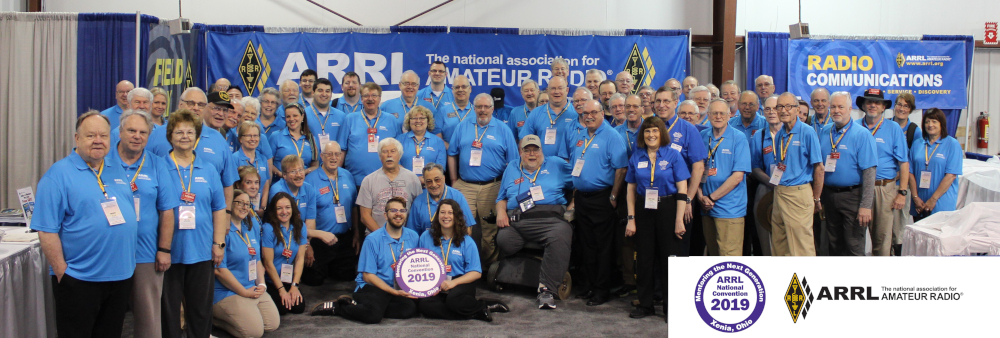 "These were some of the biggest crowds I've seen since Dayton Hamvention relocated to Xenia," ARRL Product Development Manager Bob Inderbitzen, NQ1R, said.
"These were some of the biggest crowds I've seen since Dayton Hamvention relocated to Xenia," ARRL Product Development Manager Bob Inderbitzen, NQ1R, said.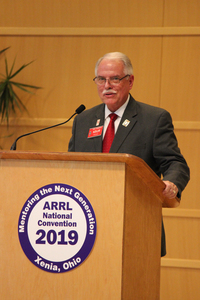
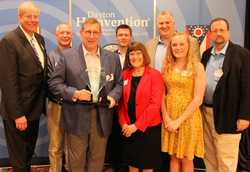
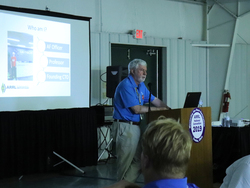
(1).jpg)
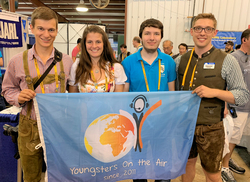
.jpg)
 Elsewhere, John Gotthardt, K1UAF, of Wolfeboro, will become Section Manager of New Hampshire on July 1. He was the only nominee for the post after New Hampshire Section Manager Pete Stohrer, K1PJS, of Concord, decided not to run for a new term after serving since 2013. Gotthardt is currently the Section Traffic Manager and also serves as Net Manager and Official Relay Station.
Elsewhere, John Gotthardt, K1UAF, of Wolfeboro, will become Section Manager of New Hampshire on July 1. He was the only nominee for the post after New Hampshire Section Manager Pete Stohrer, K1PJS, of Concord, decided not to run for a new term after serving since 2013. Gotthardt is currently the Section Traffic Manager and also serves as Net Manager and Official Relay Station.-1.jpg)
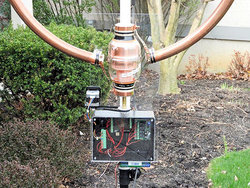 higher-end design constructed around a 5 - 500 pf vacuum variable capacitor, the project's most expensive component (these go for $150 or more on eBay). "
higher-end design constructed around a 5 - 500 pf vacuum variable capacitor, the project's most expensive component (these go for $150 or more on eBay). " Sponsored by
Sponsored by 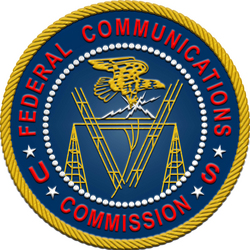 policies.
policies.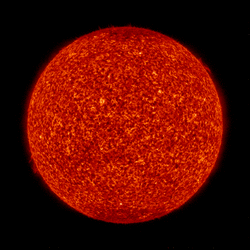 Predicted solar flux over the next 45 days is 68 on May 23 - 27; 70 on May 28 - 30; 72 on May 31; 74 on June 1; 76 on June 2 - 10; 74 on June 11; 72 on June 12 - 13; 70 on June 14 - 15; 69 on June 16 - 17; 68 on June 18; 67 on June 19 - 25; 70, 72, and 74 on June 26 - 28, and 76 on June 29 - July 6.
Predicted solar flux over the next 45 days is 68 on May 23 - 27; 70 on May 28 - 30; 72 on May 31; 74 on June 1; 76 on June 2 - 10; 74 on June 11; 72 on June 12 - 13; 70 on June 14 - 15; 69 on June 16 - 17; 68 on June 18; 67 on June 19 - 25; 70, 72, and 74 on June 26 - 28, and 76 on June 29 - July 6..jpg) The Czech Republic's telecommunications regulator CTO is investigating if theoretical study results match real life. The June test follows an initial trial that took place in late February in the Czech Republic. One objective was to verify that military and Amateur Radio stations could coexist on the band. The second test will take place when enhanced propagation is more likely. During the event, other 50 MHz band users will operate their own communication systems, and the IARU has cautioned radio amateurs not to interfere with their activities.
The Czech Republic's telecommunications regulator CTO is investigating if theoretical study results match real life. The June test follows an initial trial that took place in late February in the Czech Republic. One objective was to verify that military and Amateur Radio stations could coexist on the band. The second test will take place when enhanced propagation is more likely. During the event, other 50 MHz band users will operate their own communication systems, and the IARU has cautioned radio amateurs not to interfere with their activities.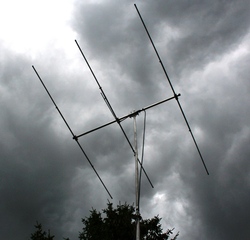 Maximum power output will be 25 W PEP, the maximum power under Czech Amateur Radio Service regulations. Stations outside of the Czech Republic are requested to use the same output power to enable comparisons with the February test. The use of spotting networks is permitted.
Maximum power output will be 25 W PEP, the maximum power under Czech Amateur Radio Service regulations. Stations outside of the Czech Republic are requested to use the same output power to enable comparisons with the February test. The use of spotting networks is permitted. 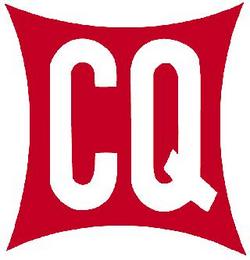 CQ inducted two new members to its CQ DX Hall of Fame, which honors those DXers who not only excel in personal performance, but also give back to the hobby in outstanding ways. CQ DX Editor Bob Schenck, N2OO, presented Hall of Fame plaques at an induction ceremony held at the annual Dayton DX dinner on May 17.
CQ inducted two new members to its CQ DX Hall of Fame, which honors those DXers who not only excel in personal performance, but also give back to the hobby in outstanding ways. CQ DX Editor Bob Schenck, N2OO, presented Hall of Fame plaques at an induction ceremony held at the annual Dayton DX dinner on May 17.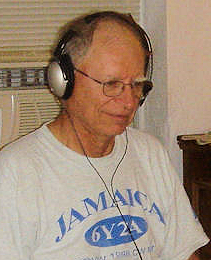 Educator, author, and contester Fred Cady, KE7X, of Bozeman, Montana, died on May 16. An ARRL Life Member, he turned 77 earlier this month. Cady was a professor emeritus of electrical and computer engineering at Montana State University. He coauthored The Successful Ham Radio Operator's Handbook with Vic DiCiccio, VE3YT. He also wrote several manuals on how to use Elecraft equipment. First licensed in 1959, Cady earned a PhD in electrical engineering from the University of Canterbury in New Zealand, and was a senior member of the Institute of Electrical and Electronics Engineers (IEEE). He taught for more than 40 years and published five textbooks on microcomputers. An avid CW contester, Cady was a member of the world record-holding Team Vertical contest group. "Fred was my very dear friend and an important mentor for me," DiCiccio said. "Working with him to write The Successful Ham book was a joy. He helped so many people as a professor, author of his books, and in his role as a volunteer fireman, fire chief, and deputy chief. He will be deeply missed."
Educator, author, and contester Fred Cady, KE7X, of Bozeman, Montana, died on May 16. An ARRL Life Member, he turned 77 earlier this month. Cady was a professor emeritus of electrical and computer engineering at Montana State University. He coauthored The Successful Ham Radio Operator's Handbook with Vic DiCiccio, VE3YT. He also wrote several manuals on how to use Elecraft equipment. First licensed in 1959, Cady earned a PhD in electrical engineering from the University of Canterbury in New Zealand, and was a senior member of the Institute of Electrical and Electronics Engineers (IEEE). He taught for more than 40 years and published five textbooks on microcomputers. An avid CW contester, Cady was a member of the world record-holding Team Vertical contest group. "Fred was my very dear friend and an important mentor for me," DiCiccio said. "Working with him to write The Successful Ham book was a joy. He helped so many people as a professor, author of his books, and in his role as a volunteer fireman, fire chief, and deputy chief. He will be deeply missed." Radio Amateurs in India recently provided post-disaster communication. According to a May 12
Radio Amateurs in India recently provided post-disaster communication. According to a May 12 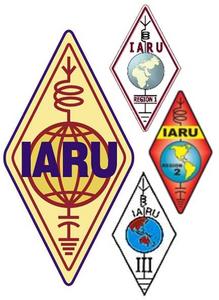 IARU Member-Societies have ratified leadership nominations and will consider new members International Amateur Radio Union (
IARU Member-Societies have ratified leadership nominations and will consider new members International Amateur Radio Union (-logo.jpg) The Radio Society of Great Britain (RSGB) has announced a Cricket World Cup Amateur Radio Marathon, from May 30 until July 14. The Cricket World Cup will take place in England and Wales. UK and international call signs will be active on nine HF bands on SSB, CW, and digital modes. Award certificates will be offered based on the number of contacts made with the special UK and international stations. Sponsors are inviting other countries to take part and to activate special call signs with the suffix "19CWC" or similar. A total of 31 special call signs will be on the air in the UK, with GB19CWC representing the 2019 Cricket World Cup Headquarters in England. Listen for other "GB19" prefix call signs. Teams will field special event stations as well.
The Radio Society of Great Britain (RSGB) has announced a Cricket World Cup Amateur Radio Marathon, from May 30 until July 14. The Cricket World Cup will take place in England and Wales. UK and international call signs will be active on nine HF bands on SSB, CW, and digital modes. Award certificates will be offered based on the number of contacts made with the special UK and international stations. Sponsors are inviting other countries to take part and to activate special call signs with the suffix "19CWC" or similar. A total of 31 special call signs will be on the air in the UK, with GB19CWC representing the 2019 Cricket World Cup Headquarters in England. Listen for other "GB19" prefix call signs. Teams will field special event stations as well. 







